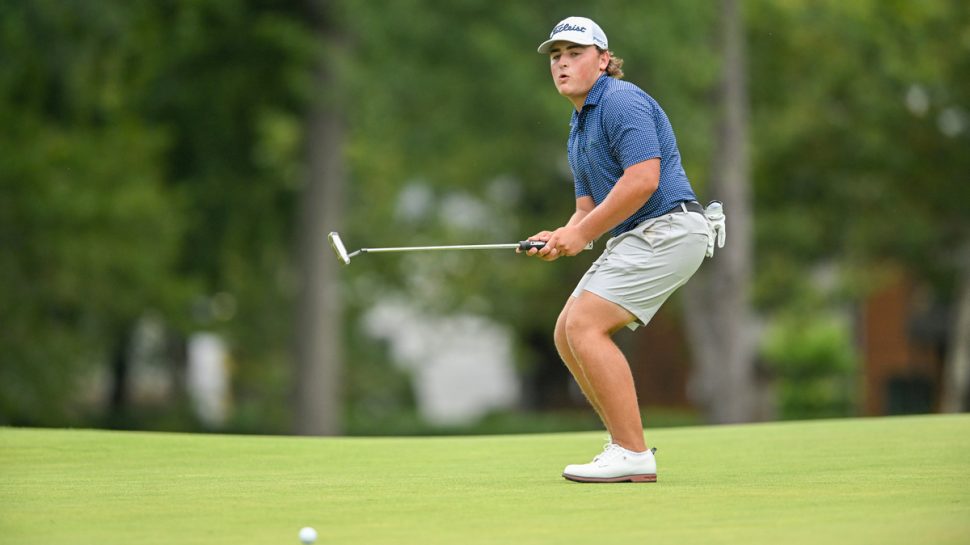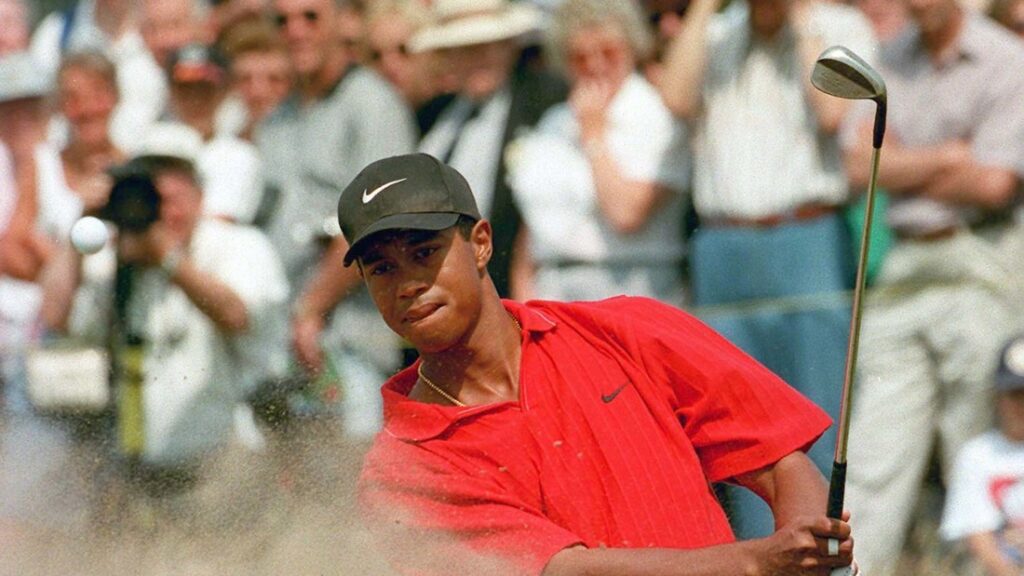Paramus, NJ. When the 312 golfers arrived for this week’s playing of the 122nd U.S. Amateur many had the lofty intention to snare the illustrious Havemeyer Trophy as winner of the most prestigious title in all of amateur golf.
The format is a rigorous one. Two rounds of stroke play — one each played at the host course Ridgewood CC and the other at nearby Arcola CC. Both courses were primed to handle the onslaught of the most talented amateurs on the planet.
64 spots were available for match play and it took a final playoff in which 15 players were battling for the remaining 11 slots.
The usage of match play to settle amateur championships is not a new inclusion — it’s been done since events of this stature were competed for over a hundred years ago. The glut of professional golf uses a predictable 72-hole stroke-play format where 18 holes are played each day and the field keeps all the contending players involved.
Not so with match play.
The trials and tribulations of match play can provide exhilaration and heart ache — sometimes on the same hole.

Take for example the event’s first round on Wednesday. Two of the four players at the very top of the leaderboard — Luke Gutschewski and Michael Thorbjornsen went home early. Guschewski felt the pain even more so — losing in extra holes after burying his approach at the par-3 3rd hole and failing to extend the match with his par putt.
Thorbjornsen came into the event as one of the favorites. The 2018 winner of the US Junior title had claimed his success at nearby Baltusrol Golf Club. He was hoping to replicate that success in the Garden State. Thorbjornsen’s pathway was blocked by the 63rd seeded in the event.
The same can be said for the reigning NCAA Division I golf champion — Gordon Sargent. After firing a tournament low 65 at Arcola in the second day of stroke play — the talented player from Vanderbilt was dispatched on the 21st hole after playing the par-5 3rd hole in a sloppy manner. On the previous hole he had a winning 15-foot putt but failed to convert.
Match play is about incredible highs and lows. It is being able to summon the skills needed when called upon at a given hole. One cannot wait till later because later may be too late. The back and forth swings and momentum changes can be exhausting.
Each hole is a separate contest — total score does not matter — just the wherewithal to compete as each hole comes forward.

When two players arrive at the opening hole — one clear and stark reality sets in firmly. Only one player will go on — the other heads home.
For the victor the next day means starting anew. What one did the round prior means absolutely nothing. You have to restart the engines against a new opponent.
Mental strength lies at the heart of match play success and must be called upon to supplement the exquisite physical skills the players possess.
You ultimately face — often countless times in a highly competitive match — a series of do or die situations.
Match play is tied to momentum. Like the wind — it can change direction and velocity at any time. Players realize this because resting on a lead can be a dangerous slippery slope. Regrouping can be essential because once momentum slides in an opposite direction the wherewithal to recapture it can prove a daunting task.
To illustrate the nature of what match play can mean one only need look back at the mind-boggling successes Tiger Woods demonstrated throughout his amateur career. Before becoming arguably, the greatest player to have ever played in the sport — his amateur record is one to seriously assess.
https://twitter.com/USGA/status/814917236934602753
Woods captured three consecutive U.S. Junior Amateur titles — no one had ever done so and likely no one will ever match that accomplishment. Given the match play format — being off just a bit can mean certain defeat. None happened for Tiger.
Success at the U.S. Amateur did not happen right away for Tiger. He was beaten in the 1992 and 1993 events — the former coming from a serious whooping by Tim Heron in the second round by the lopsided margin of 6&4. The next year Woods would lose in the second round to England’s Paul Page. That would be his final loss in the event.
Starting in 1994 — Woods put together one of the finest stretches of amateur golf ever played. The highlight coming in the U.S. Amateur and doing so via the match play format where his blending of mental and physical prowess was on display.
Woods trailed by five holes with 12 to play. The rally that Tiger demonstrated was a forerunner in what he would later do professionally.
At the 1995 U.S. Amateur Woods again trailed to veteran amateur George “Buddy” Marucci and the match came to the 36th hole before Tiger stiffed an 8-iron approach to defend his title with a 2-up victory.
As much as the past successes were notable Woods put matters into a place that likely will never be duplicated — let alone surpassed.
During the 1996 U.S. Amateur Woods was seeking a three-peat of the title — something never accomplished previously.
The vagaries of match play are ever present. All it takes is a stretch of holes or even a single shot and the momentum to victory can be detoured ever so quickly.
Woods reached the final match against an unheralded Steve Scott from the University of Florida. Few people believed Scott could possibly play the role of David to Tiger’s Goliath. The Gator golfer though performed superbly — through the morning 18 Scott stormed out to a 5-up lead. The margin was still two-up with three holes to play.
Then the ever-fickle word of “momentum” happened.
Woods incredibly took the match to extra holes — eventually winning on the 38th.
When one looks back from the vantage point of the 2022 U.S. Amateur at Ridgewood CC this week the totality of that success towers miles beyond one’s imagination.
After losing as a 17-year-old in the 1993 event — Woods achieved a match-play record of 18-0 before moving onward to the professional ranks. The rest, as they say, is history.
Match play provides the kind of golf jousting that can be irresistible to watch and ever so pressure packed for the contestants.
This year’s U.S. Amateur is now in the home stretch with the semi-finals set for Saturday and a 36-hole final match planned for Sunday.
This weekend at Ridgewood will be the next chapter in history of one of golf’s most endearing events.
For one golfer — the end game will be a dream come true with both hands wrapped around the Havemeyer Trophy. For the other — the pain of being ever so close may linger long after the final hole is played.
Match play — miracles and misery — front and center.
Yes indeed.
